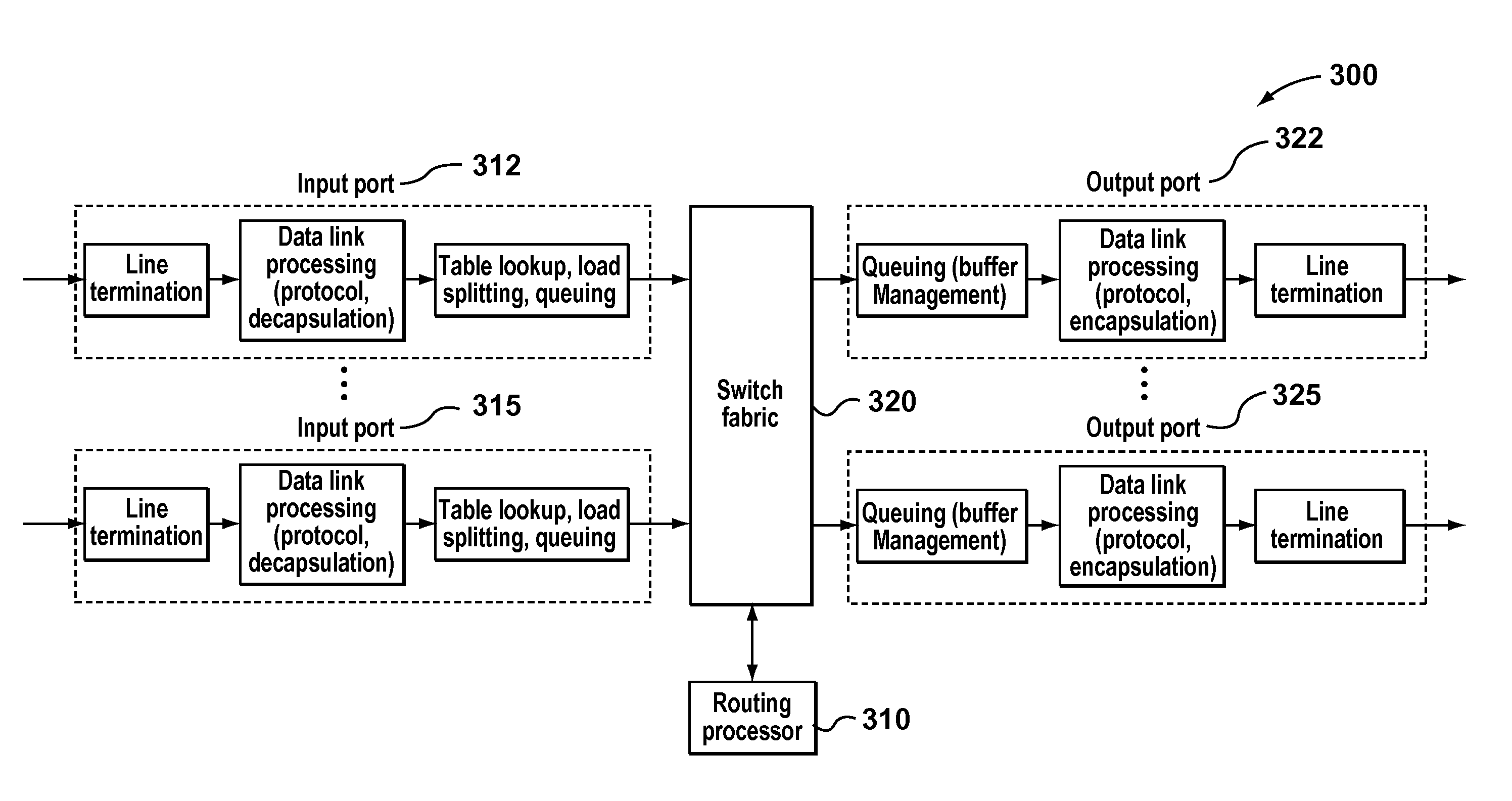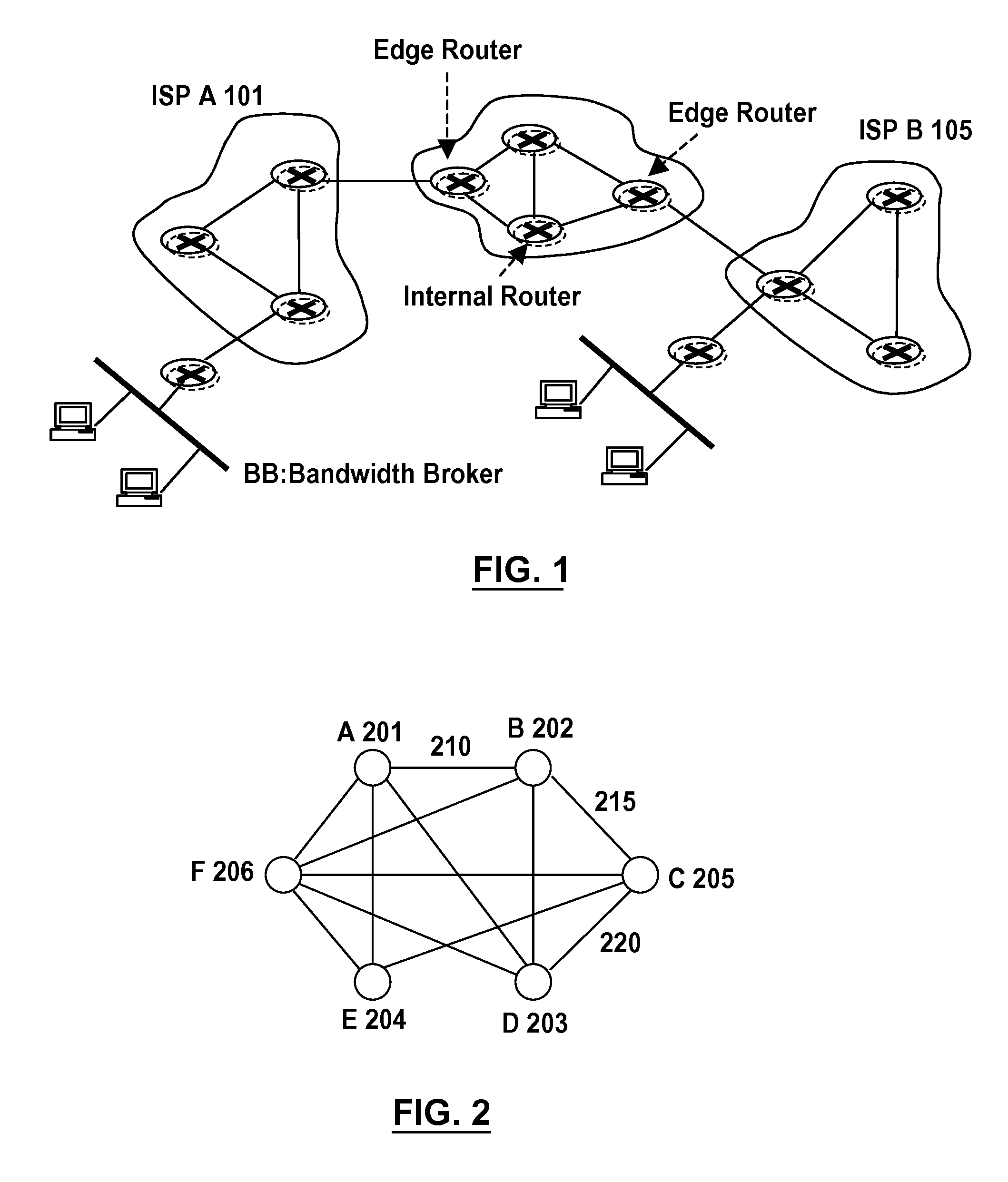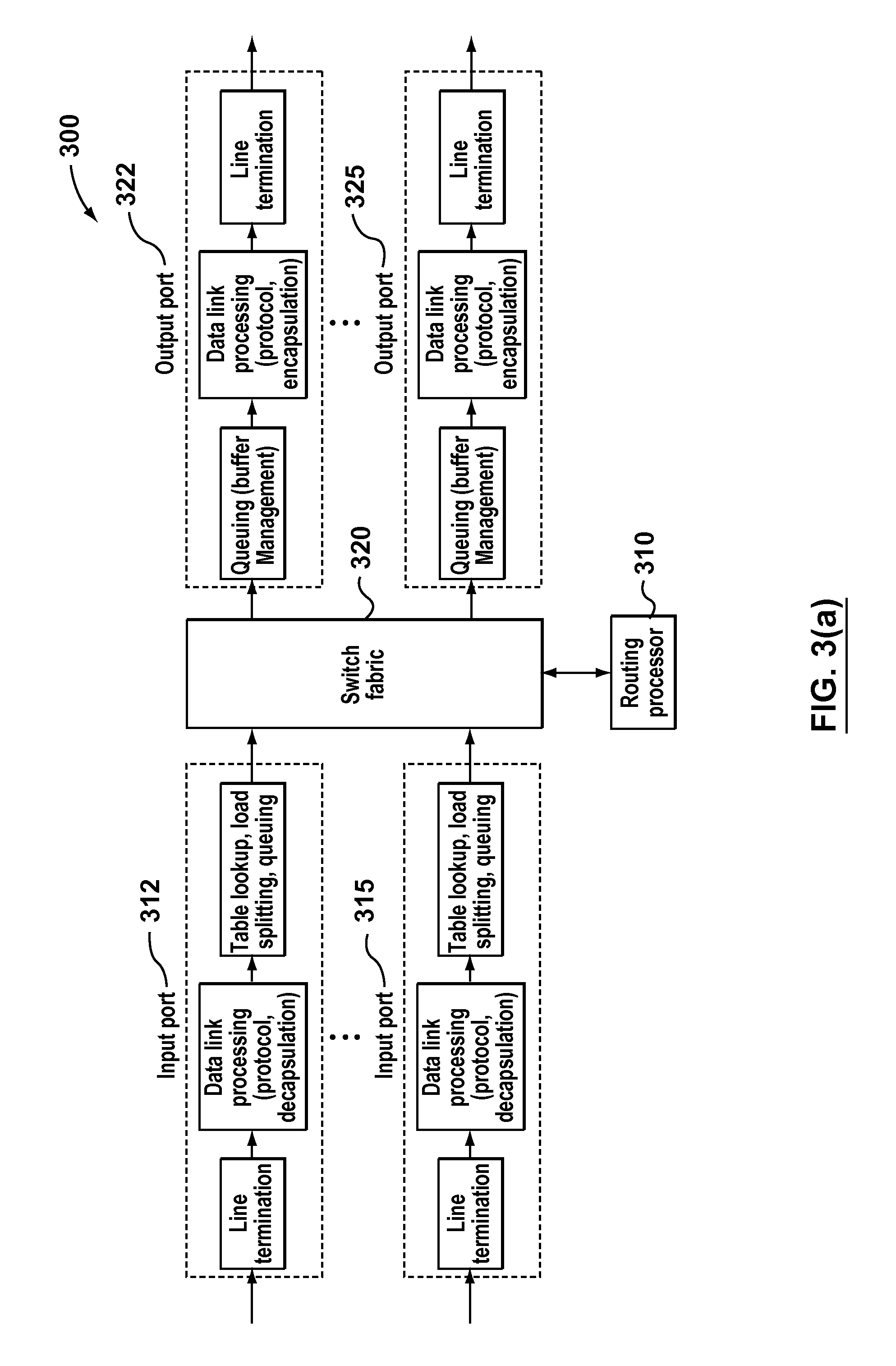Non-blocking destination-based routing networks
a destination-based routing and network technology, applied in data switching networks, frequency-division multiplexes, instruments, etc., can solve the problems of reducing the cost of handling service requests, unable to maintain the state information of all links of the entire network, and unable to meet the requirements of the service quality of the developing internet. achieve the effect of maximizing the amount of admissibl
- Summary
- Abstract
- Description
- Claims
- Application Information
AI Technical Summary
Benefits of technology
Problems solved by technology
Method used
Image
Examples
Embodiment Construction
[0031]This invention involves the novel design of a non-blocking network. In this invention, a method and a system for determining traffic constraints, routes, and load-distribution among the equal-distance shortest paths to achieve non-blocking in each router are implemented.
[0032]The invention will be illustrated in conjunction with illustrative embodiments of a network and an associated route computation and load-distribution scheme. It should be understood, however, that the invention is not limited to use with the particular network system or node implementation described, but is instead more generally applicable to any route computation algorithm that intends to make network non-blocking.
[0033]FIG. 3(a) is a diagram illustrating a typical router 300 according to one embodiment of the invention. The router 300 includes a routing processor 310, and the switching fabric 320. The switch fabric 320 is an interconnected network of switching devices connecting multiple numbers of inp...
PUM
 Login to View More
Login to View More Abstract
Description
Claims
Application Information
 Login to View More
Login to View More - R&D
- Intellectual Property
- Life Sciences
- Materials
- Tech Scout
- Unparalleled Data Quality
- Higher Quality Content
- 60% Fewer Hallucinations
Browse by: Latest US Patents, China's latest patents, Technical Efficacy Thesaurus, Application Domain, Technology Topic, Popular Technical Reports.
© 2025 PatSnap. All rights reserved.Legal|Privacy policy|Modern Slavery Act Transparency Statement|Sitemap|About US| Contact US: help@patsnap.com



